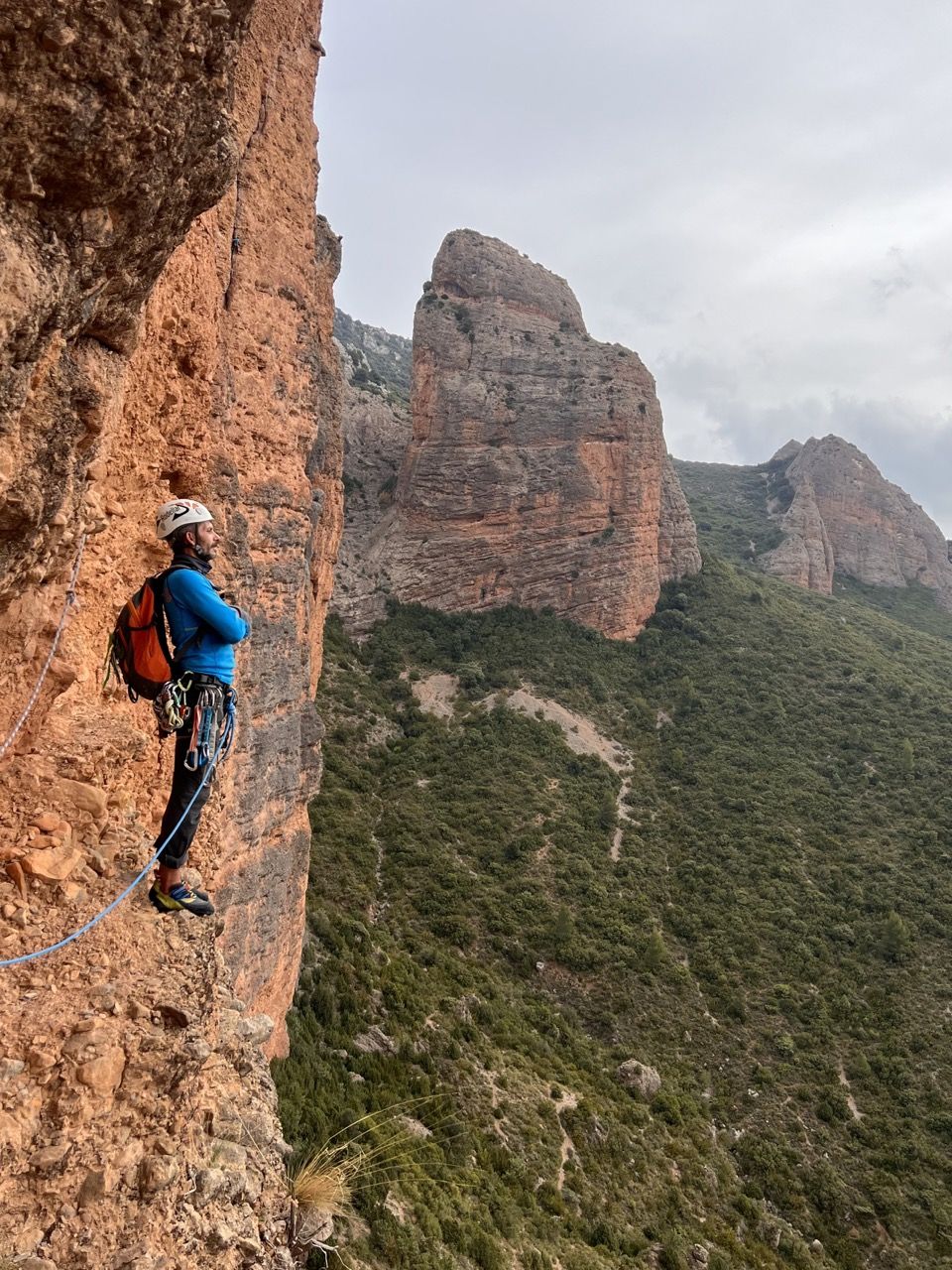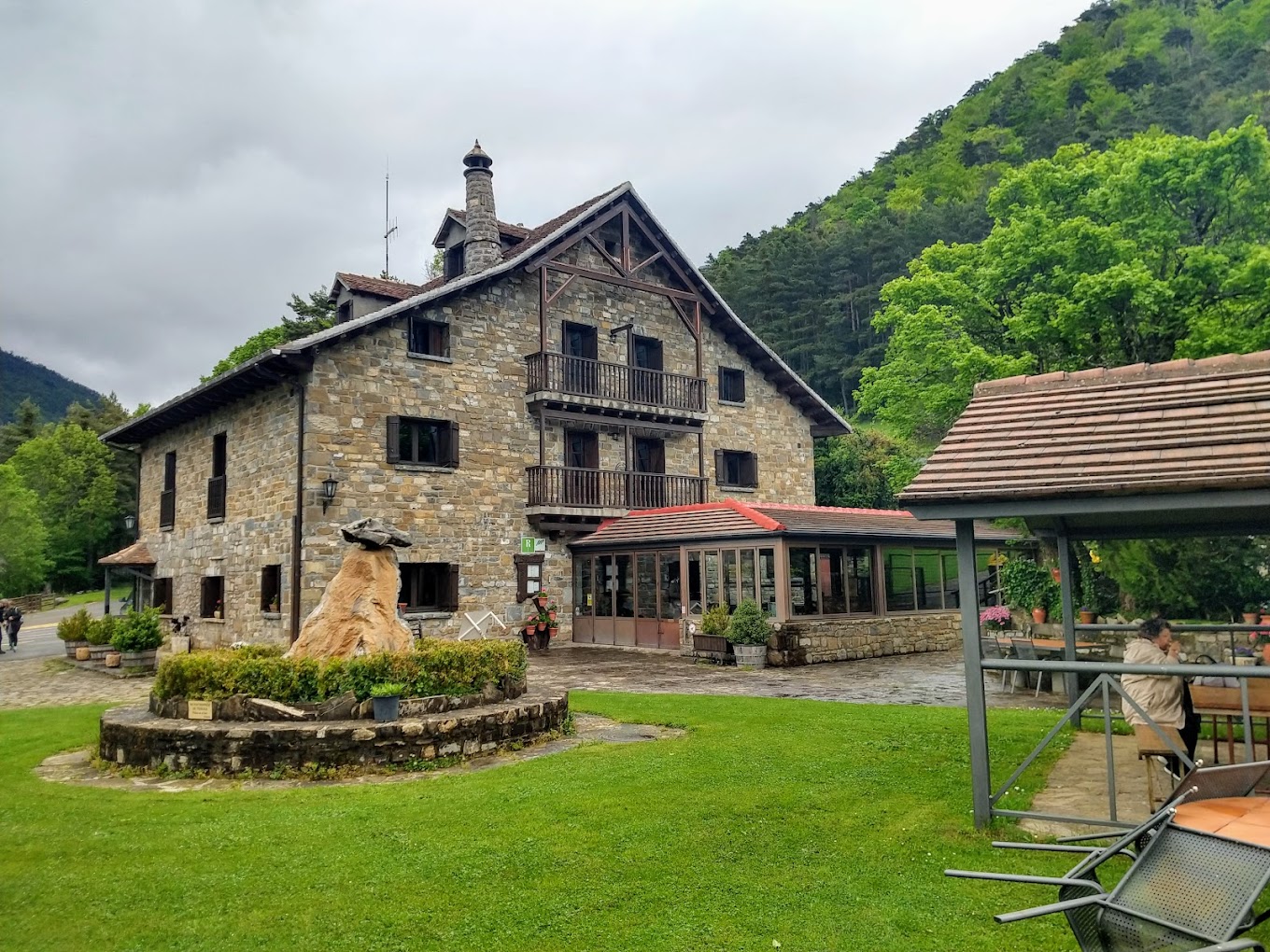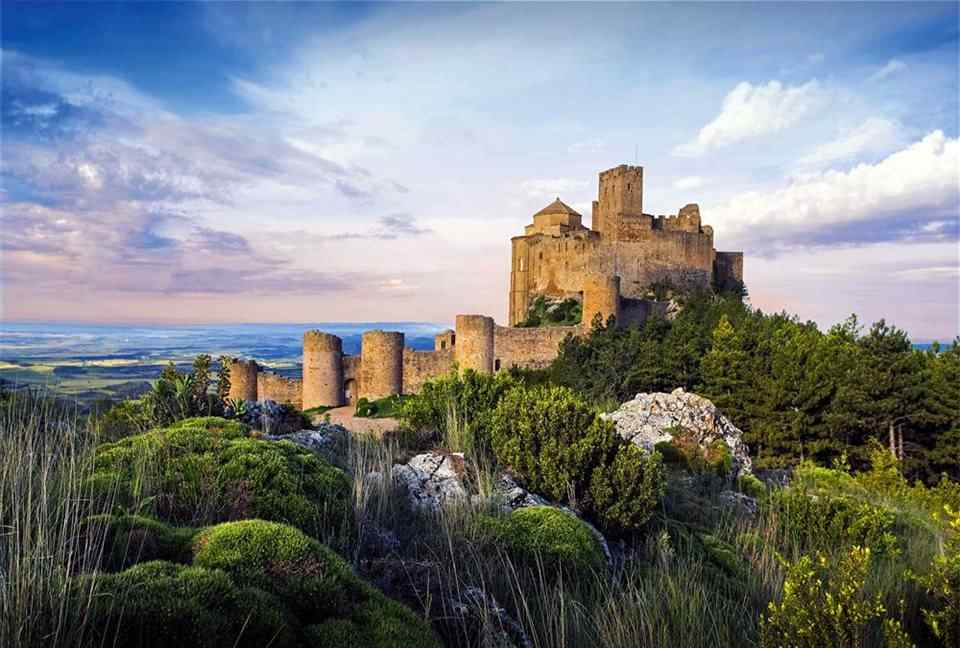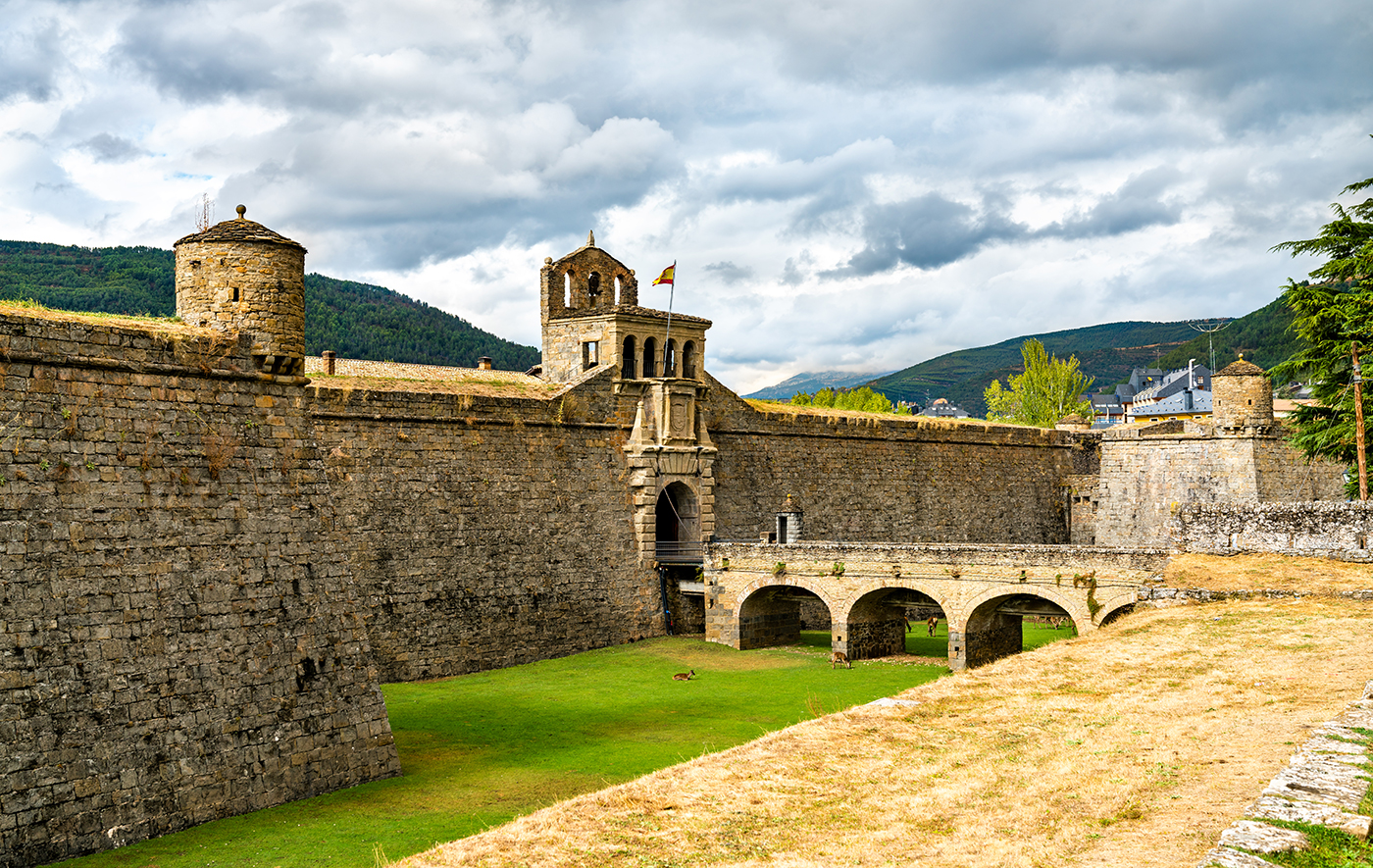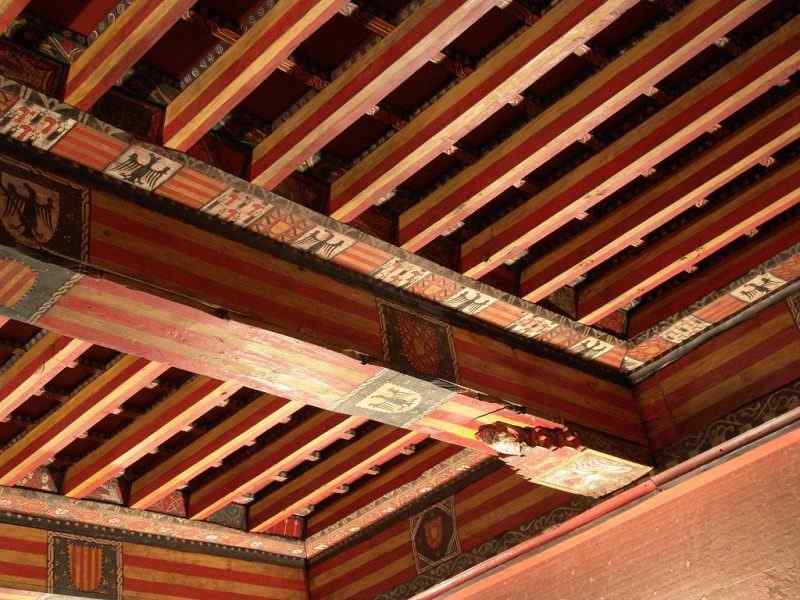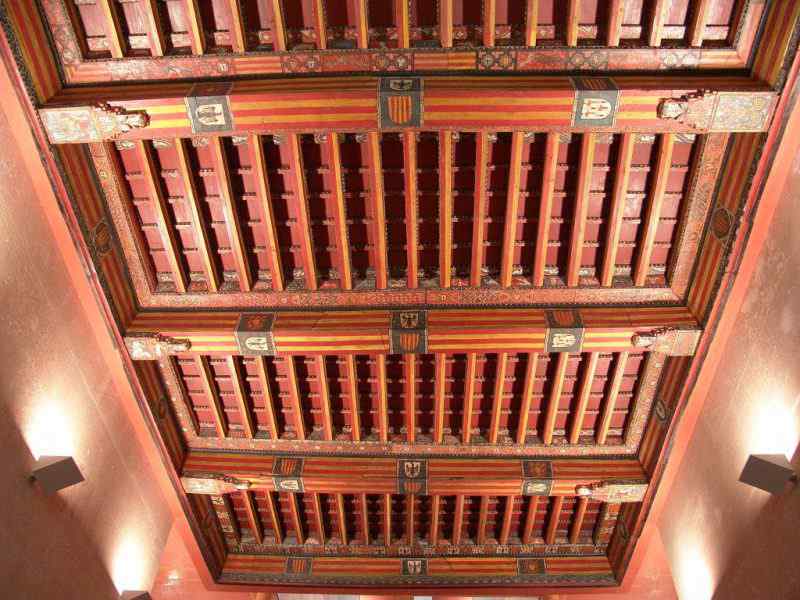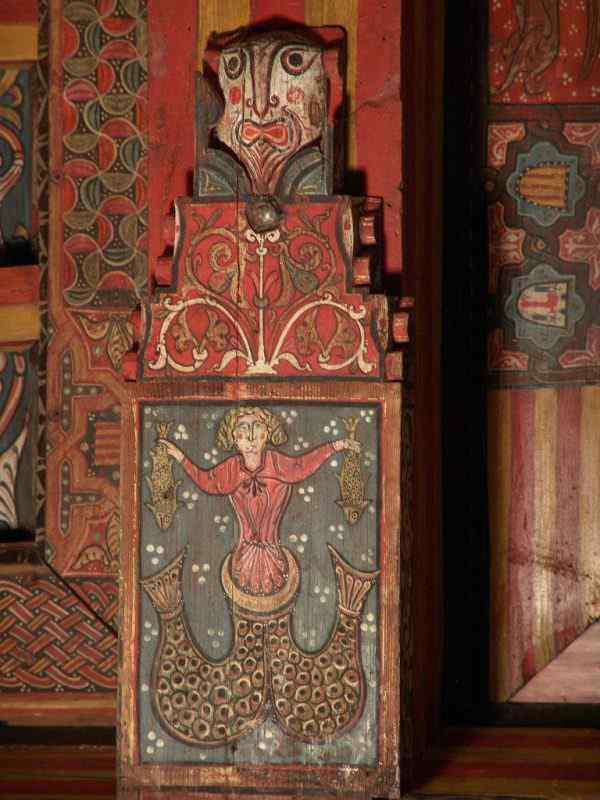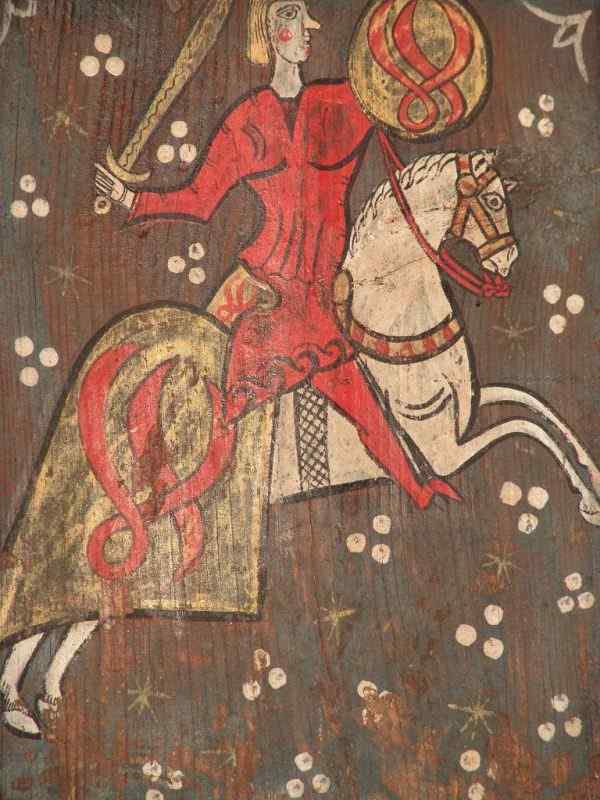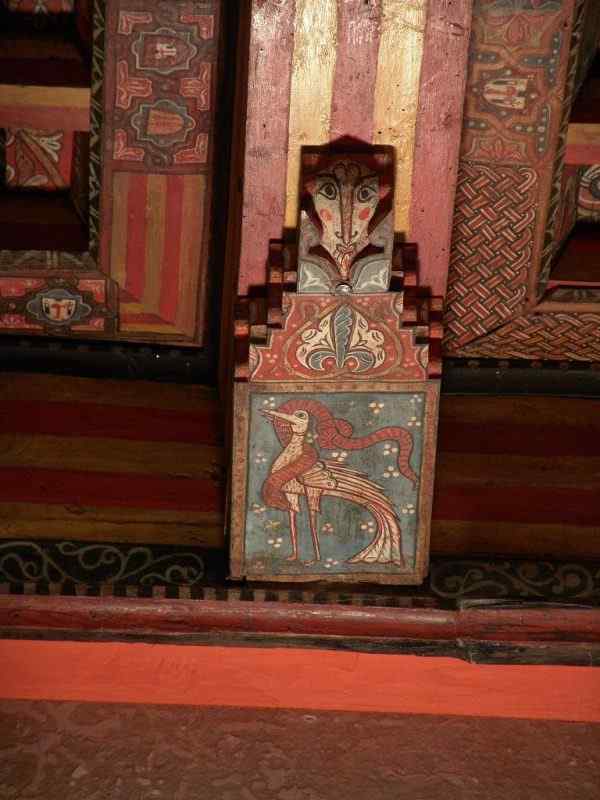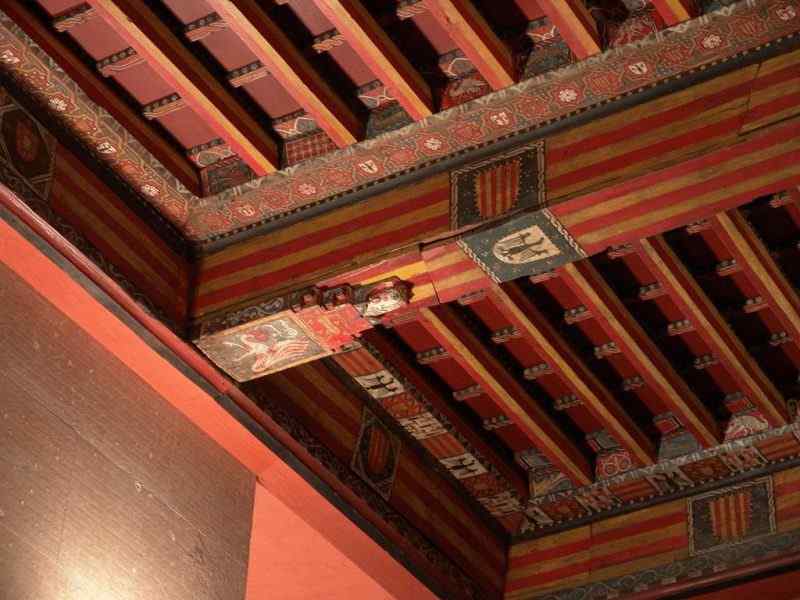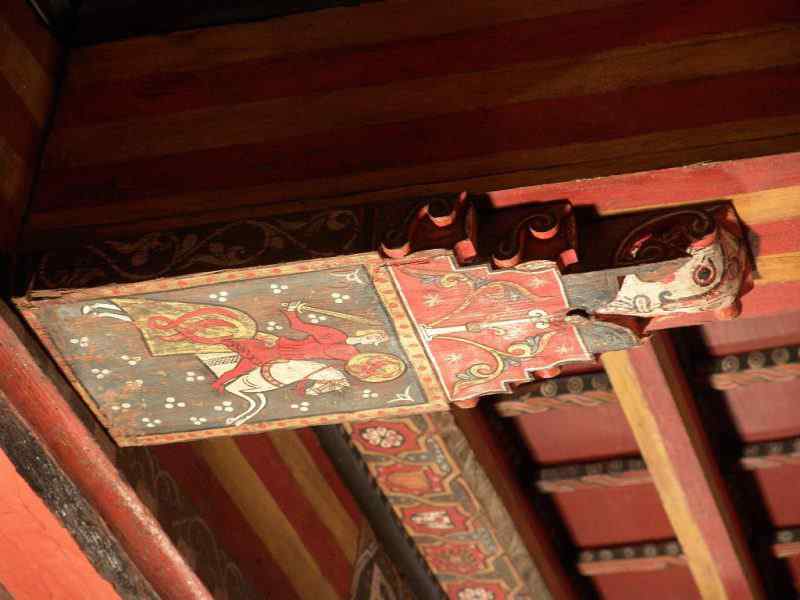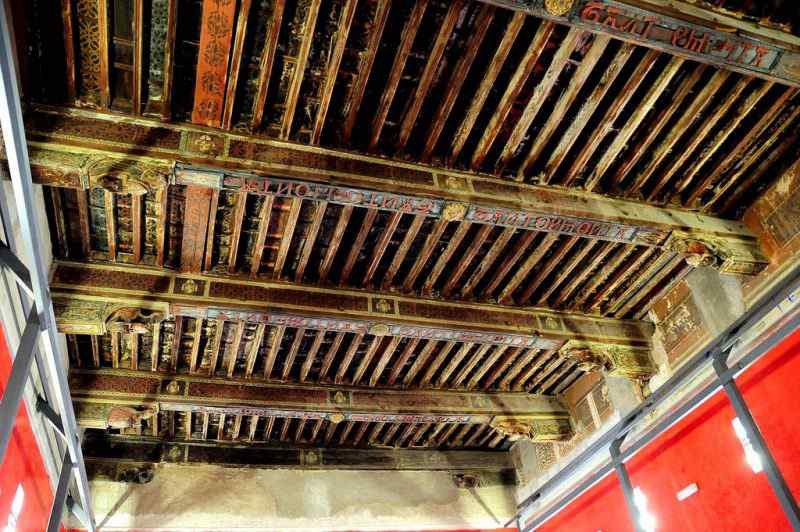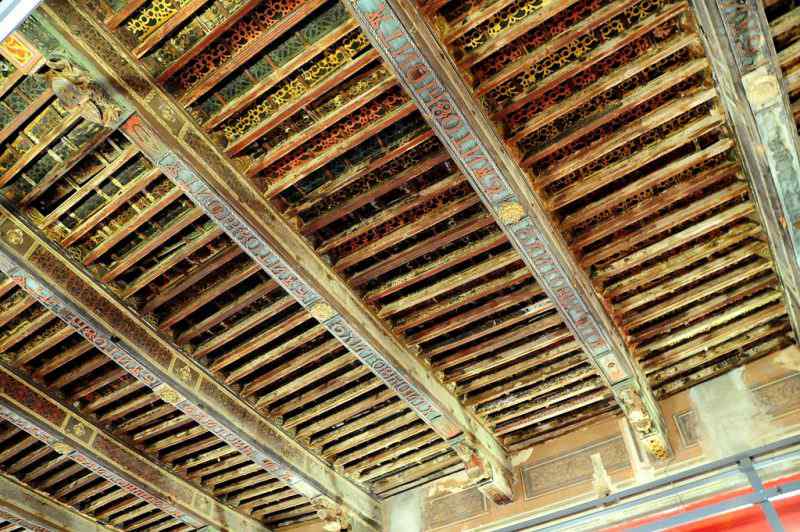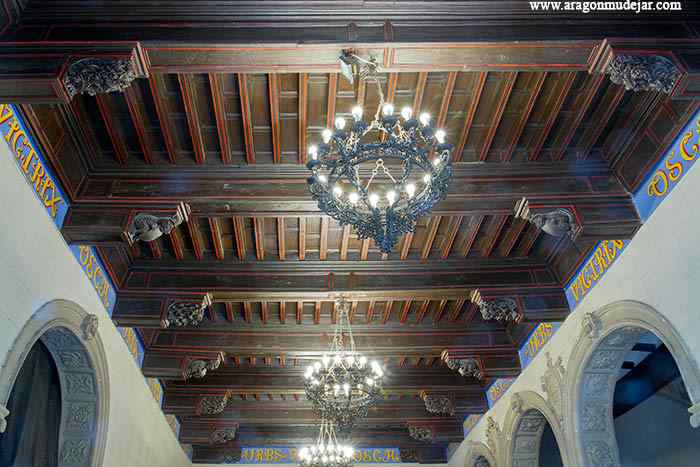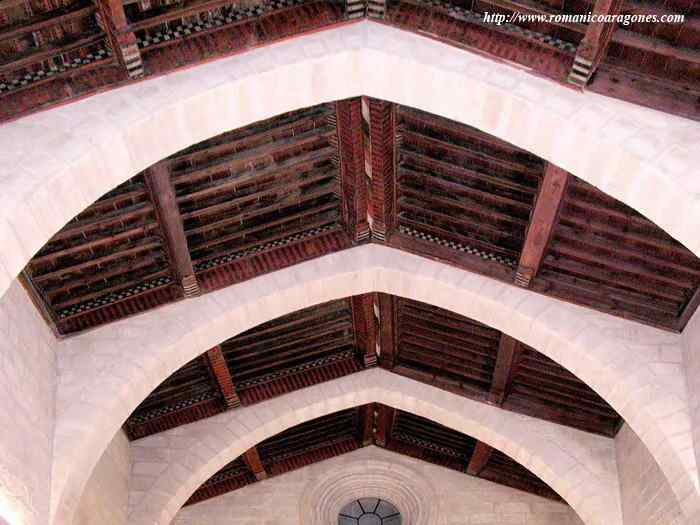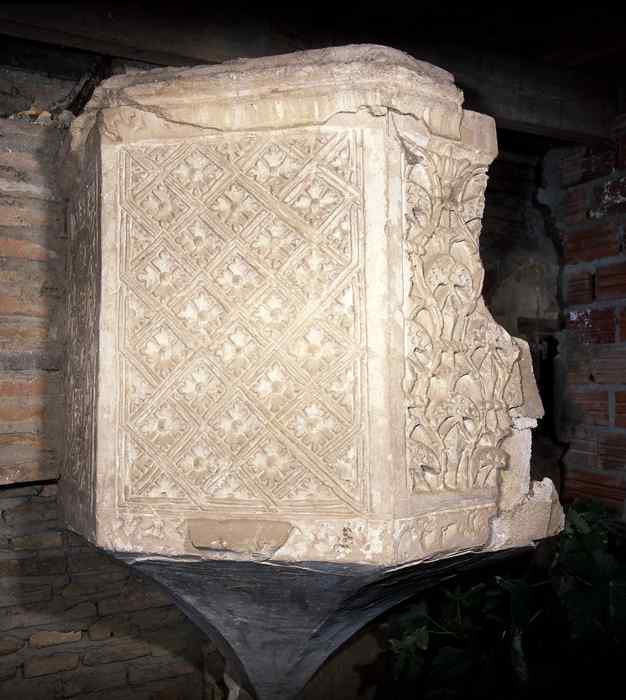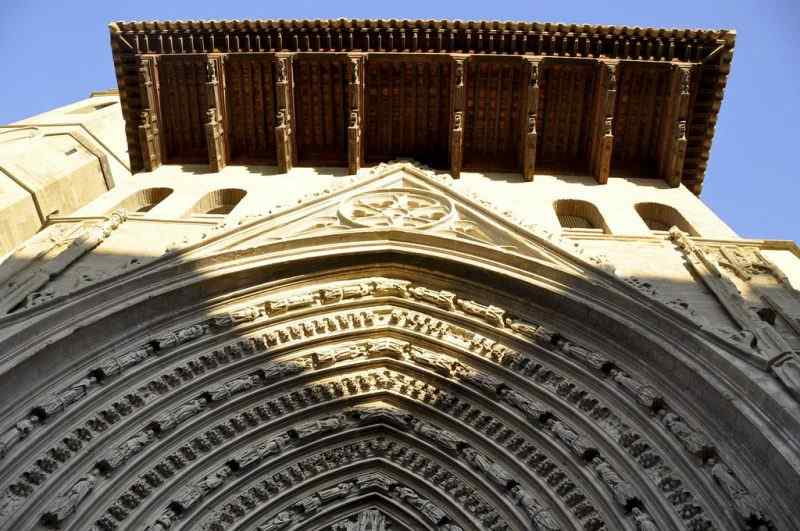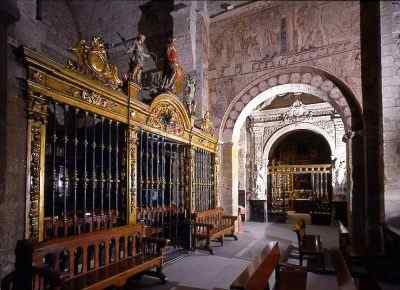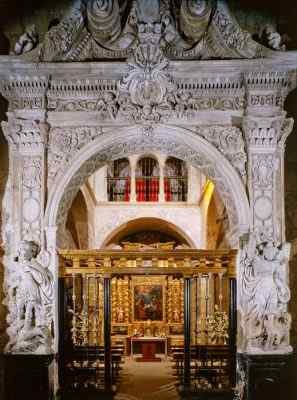The surprising and unknown Mudejar Route in the city of Huesca ☪
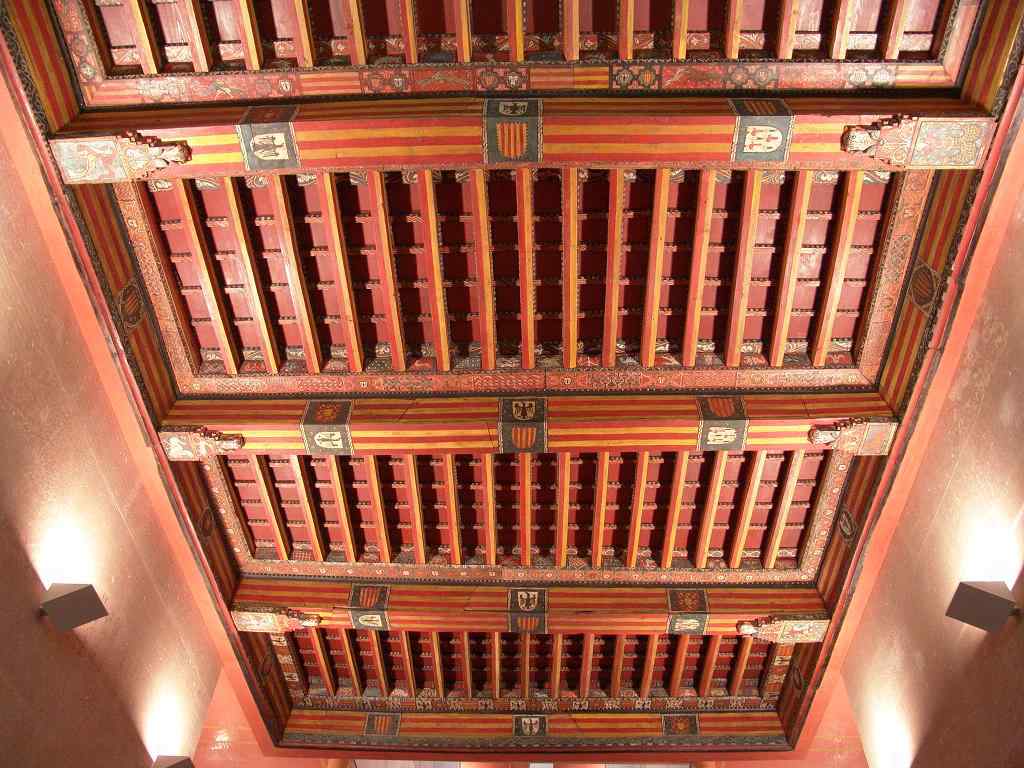
Zaragoza and Teruel are well known for the Mudejar constructions they preserve, but the same does not happen with Huesca capital, and nevertheless treasures some of the most interesting elements of this Mudejar style in Aragon.
The pottery of the Hall of “Tanto Monta” annex to the Cathedral and that of the Palace of Villahermosa, considered as one of the most significant of those preserved in Aragon, only surpassed in its iconography by the roof of the Cathedral of Teruel, as well as The roof which covers the church of San Miguel, popularly known as “Las Miguelas”, already deserve a visit to the city of Huesca.
In addition, the Diocesan Museum exhibits one of the few remaining Mudejar pulpits in Aragon, that of the old Alms Room.
It could not miss some manifestation of the work of plasterwork with motifs of Mudejar tradition that was so lavished during the Baroque era in the Community, and that in Huesca left its mark on the Cathedral and the Church of San Pedro el Viejo. In short, one of the visits that every Mudejar lover should keep in mind in their agenda.
1 – ALFARJE DEL PALACIO DE VILLAHERMOSA
Prior to the construction of this building, the site was occupied by three houses that joined, according to a sixteenth-century city plan, to configure the new construction.
Two of them would correspond to the palatial building that overlooks the Plaza del Conde de Guara, while the third, joined by the back to the previous ones, had access by a corralaza, blinded in modern times by the construction of the Post Office building.
One of these houses was the residence of the counts of Guara of the Azlor lineage. Members of this family accompanied Pedro I in the battle of Alcoraz and subsequent reconquest of Huesca being likely that it was one of them who raised his residence on this site.
In 1999 it was acquired by IberCaja that began the restoration and rehabilitation works to turn it into the headquarters of its Cultural Center in the capital of Huesca. After the restoration, the interior has been divided into three floors, articulating the space around an enclosed patio that is covered with a splendid Mudejar pottery.
Its vast iconographic repertoire that includes representations of human, animal, vegetable, geometric, epigraphic and heraldic type, is only surpassed in importance within Aragon by the roof of the Teruel Cathedral. Becoming the 2nd most important in Aragon.
2 – ALFARJE DEL SALÓN DEL “TANTO MONTA”
After long years in which there have been several attempts that for various reasons did not come to fruition, it seems that it will finally be between 2014 and 2016 when the restoration of the so-called Hall of ” Tanto Monta” of the old Archbishop’s Palace of Huesca is completed. Once the structure of walls and roof was consolidated, it was necessary to return all its splendor to the roof that covers it, one of the best of those preserved in Aragon.
The Hall of “Tanto Monta” is located on the top floor of the old Episcopal Palace, annexed to the Cathedral. It was an audience hall of the Huesca Bishops, at least from the fifteenth century until the mid-twentieth when it was abandoned and closed, being integrated into the set of buildings that are known as the surroundings of the Cathedral and currently linked to the Diocesan Museum.
3 – POTTERY OF THE TOWN HALL
To the little known list of Mudejar works of the city of Huesca we must add the pottery of the town hall. After the important reforms and extensions of the sixteenth century, practically the only vestige that remains of the House of the Court, corresponds to the two magnificent pottery roofs that cover the current entrance courtyard and Hall of Justice.
4 – CHURCH OF SAN MIGUEL “LAS MIGUELAS”
In the north of the city of Huesca, on the bank of the Isuela River, next to the bridge of San Miguel, stands the church of San Miguel. It is popularly known by the people of Huesca as “Las Miguelas” for being established in the annexed convent, since the seventeenth century, a religious community of the Order of the Carmelites Calzadas. The temple was founded by King Alfonso I in 1110.
The nave is covered with a wooden roof on pointed diaphragm arches of well-squared ashlar stone as well as the walls. Its recovery is also the result of the restoration, since for a long time it was hidden by a false ceiling of plaster and reeds.
5 – PULPIT OF THE ALMS ROOM
The pulpit of the Sala de las Alms of the Cathedral of Huesca, the only one that is preserved of the four that are documented in the province made in the sixteenth century with motifs of Mudejar tradition, is currently located inside the Cloister, within the museum space of the Cathedral.
Its original location is located in what in principle would be the refectory of the old Episcopal Palace since, like the disappeared monastery of Casbas, It was a refectory pulpit free of tornavoz since it was not intended for a wide space, also lacking an access staircase. This room would later be converted into an alms dining room, from which comes the name with which it is known, being used for religious readings during meals as was done in monasteries.
6 – HUESCA CATHEDRAL
The Cathedral of Huesca is located in the upper part of the town, where vestiges have been found since Roman times, being able to have located in the place the most important part of the city, that is, the forum of the ancient Osca. On the site currently occupied by the temple, the main mosque of Wasqa, the Arabic name by which the population was known, was built during the Muslim domination. A horseshoe arch that was probably part of the minaret is still preserved in the cloisters area.
After the reconquest of Huesca in 1096 by Pedro I, the mosque was consecrated as a Christian temple, remaining so for two centuries. In this period of time that covers the eleventh and twelfth centuries and the beginning of the thirteenth century some small buildings are attached, including a small Romanesque church dedicated to “Santa María de los Gozos” and a small cloister.
It was not until 1273, when Bishop Jaime Sarroca, nephew of King James I the Conqueror, was undertaken when the construction of the new cathedral was undertaken thanks to the impulse of both.
The roof, which seems to be originally at a lower height and that in modern times was moved to its current position to leave visible the gable of the cover, is supported by eight large triple dogs; A small overhang to the front and sides complements it. Dated perhaps towards the fifteenth century, together with the pottery of the Salón del Tanto Monta, with which the figures have some relationship.
7 – CHURCH OF ST. PETER THE ELDER
The church of San Pedro el Viejo is located in the old town of Huesca. Its site was occupied by a Roman temple on which a Visigothic was built, later another Mozarabic and finally the current one in Romanesque style, work of the twelfth century. Specifically, it was in 1117 when it was decided to demolish the old church and build a monastery that, except for reforms and deterioration, is basically the work that has survived to this day.
In the footsteps of the Gospel side, in front of the entrance to the Cloister, the Chapel of Saints Justo and Pastor opens. Built in the eighteenth century, it has a monumental baroque façade that gives access to the interior at the head of which is the altarpiece with a large central painting painted in 1676 by Bartolomé Vicente, where the martyrdom of the two holy children is represented. The cover closes in a semicircular arch with a fence that reaches the start of the arch.
It is in the intrados of this arch where you can see a plaster decoration based on motifs of Mudejar tradition. Specifically, the theme that was applied here is one of the simplest and most used within the repertoire of Mudejar themes applied especially in vaults and intradoses of arches that was generalized in the seventeenth and eighteenth centuries in many Aragonese churches. It is an octagonal loop of four that gives rise to a series of eight-pointed stars and cruciform spaces that here, due to the narrowness of space, are reduced to half crosses on the sides.
Small sample that, as in many other Aragonese churches, gives an idea of the roots that the decorative motifs of Islamic ribbon, later developed by the Mudejars, had in our Community.


